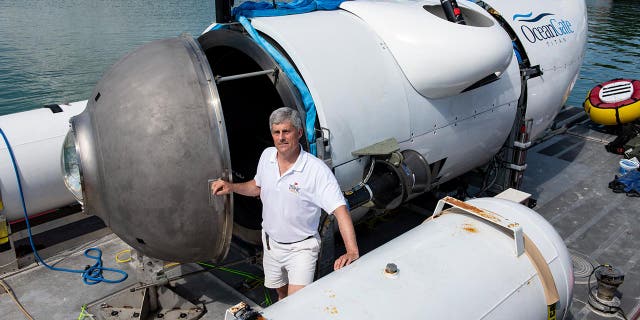
According to reports, OceanGate CEO Stockton Rush hired college-aged interns to design the Titan submersible’s electrical systems. Stockton, along with British entrepreneur Hamish Harding, French diver Paul Henry Nargeolet, and Pakistani businessman Shahzada Dawood and his son, Suleman, were killed when the vessel imploded.
“The whole electrical system — that was our design, we implemented it, and it works,” former intern Mark Walsh told Washington State University’s college newspaper in February 2018.
According to the college newspaper, Mark graduated in 2017 with a degree in electrical engineering and began as an intern. He then became the full-time electrical engineering lead for OceanGate. Mark went on to say that he had hired other interns from his college and was eager to hire more for OceanGate. According to Mark’s LinkedIn profile, he worked for OceanGate for two years before leaving in 2019.
OceanGate was also seeking interns from Everett Community College’s Ocean Research College Academy
In a statement to The Everett Herald, Washington State University said on June 22 that they do not “have an alliance with OceanGate.” “We are aware that some of our graduates have worked at OceanGate. To our knowledge, one graduate currently works there,” the university added.
According to reports, OceanGate was also seeking interns from Everett Community College’s Ocean Research College Academy. However, in 2019, the college ceased giving internships with OceanGate. The executive director of the academy, Ardi Kveven, stated that “there was often a disconnect between the exploration community, which embraced pushing the envelope, and the more methodical scientific community.”
According to reports, Stockton admitted two years ago that the Titan submersible’s design had “broken some rules.” Stockton expressed his desire to be recognized as an inventor in a 2021 interview with Mexican YouTuber alanxelmundo. “I think it was General MacArthur who said: ‘You’re remembered for the rules you break,'” Stockton said. He then said he acknowledges that he had “broken some rules” with the Titan’s manufacturing, however, he had confidence that the vessel was safe.
“I think I’ve broken them with logic and good engineering behind me. Carbon fiber and titanium? There’s a rule you don’t do that,” he told alanxelmundo. “Well, I did.”
The Titan’s hull was built of aerospace-grade carbon fiber, despite the fact that submersible hulls are generally made of solid metals such as steel or titanium. Following his death, several emails and texts between specialists and Stockton went public, demonstrating that he ignored repeated warnings that the submersible was unsafe.
